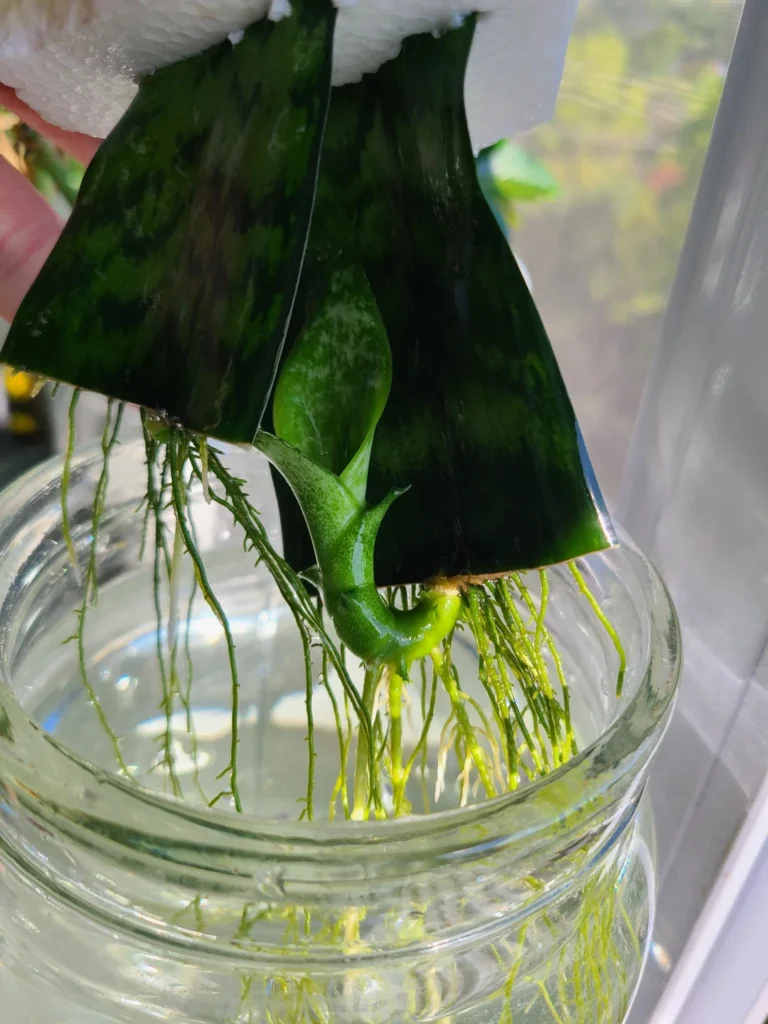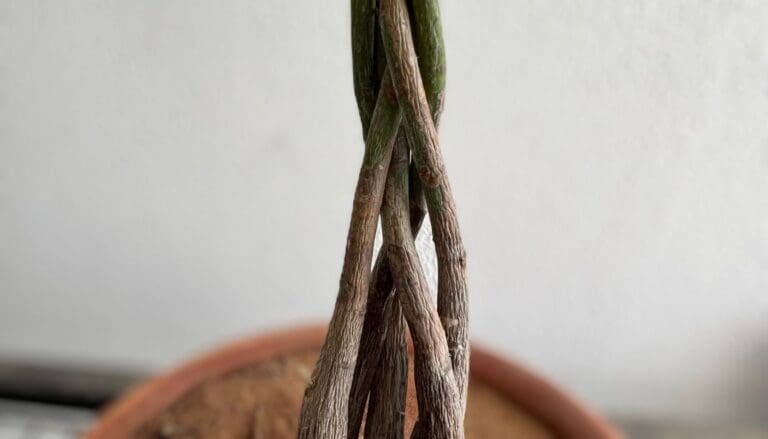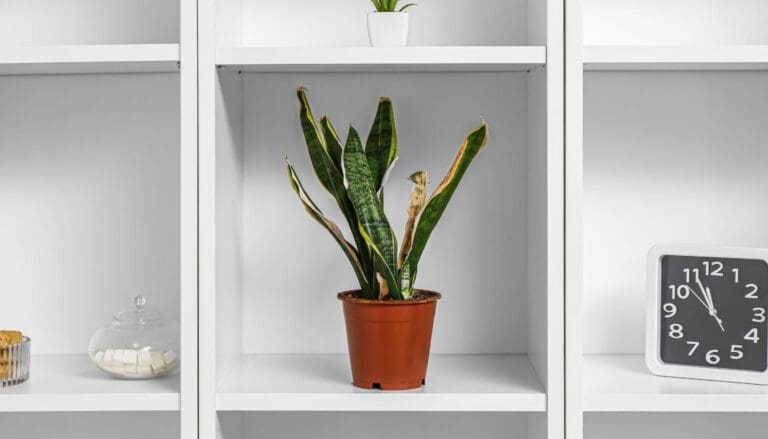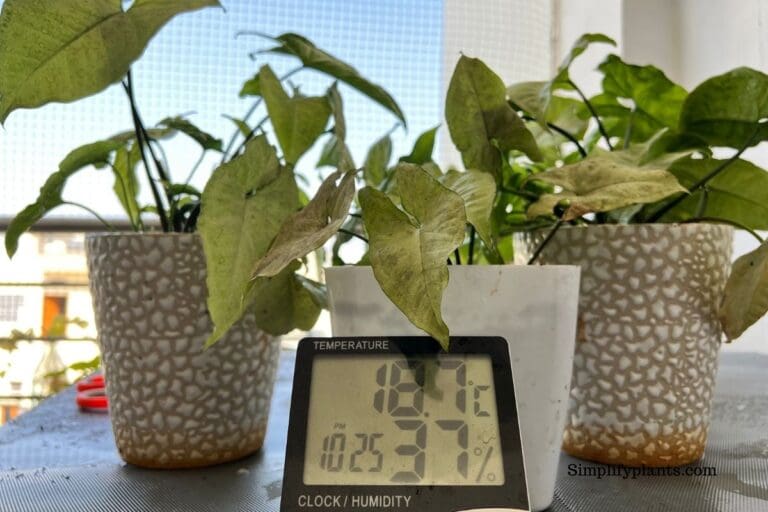How To Care For Calathea In Winter? (Calathea Winter Care)
Calathea is a tropical plant that has been adapted as a houseplant due to its stunning foliage. If you have some tropical plants in your house, you know that these plants don’t enjoy winter. These plants prefer warm conditions, opposite to the winter conditions.
So, in this article, we shall learn how to care for calathea in winter.
To keep your Calathes healthy during winter, you need to keep the following in mind:
- Water the plant when the topsoil gets somewhat dry. However, don’t let the soil get bone dry.
- Install a humidifier to maintain the humidity around your plant.
- Move the plant away from cold drafts.
- Make sure the plant gets medium bright sunlight.
- Stop fertilizing the plant after the fall season.
- Check for pest infestation and spray neem oil once a month.
This article will dive deep into finding the right conditions to help you take care of your Calathea in winter. Let’s get started!

Please note: Simplify Plants is reader-supported. Some links in the post are affiliate links and I get a commission from purchases made through links in the post.
Do Calatheas go dormant in winter?
Similar to most tropical houseplants, Calatheas also go dormant in winter. This is a natural process and not something that you should be worried about.
Tropical plants like Calathea don’t enjoy the low light, temperatures, and humidity of the winter times. They prefer a warm climate similar to their native lands.
So, when winter arrives, Calathea sheds its leaves and goes into a dormant mode. It conserves its energy and doesn’t grow during this period.
Once winter ends and the temperatures rise, the plant starts coming out of the dormancy and focuses on growth again.
However, you must not overdo anything like fertilizing or watering as you did in the other seasons. You should try to keep your Calathea healthy, especially in winter.
How cold is too cold for Calathea?
Calatheas come from tropical forests where they are used to temperatures ranging between 65-80°F. During winter, the temperatures start dropping and become unsuitable for Calatheas.
Temperatures below 55°F become too low for the Calathea. If you expose it to such low temperatures, the plant will get stressed.
You must keep your Calathea away from cold drafts during winter as these can be highly harmful to the plant.
Also read: What Temperature Can Calathea Tolerate? (Ideal Temperature Range)
Common problems of Calathea in winter

Winter comes with unfavorable conditions that can lead to different problems in your Calathea plant.
A few common problems you might notice in your Calathea are:
- Stunted growth
- Loss of leaves
- Overwatering
- Leggy growth
- Overfertilization
Since Calathea enters a period of dormancy in winter, it conserves its energy and doesn’t focus on growth. So, if you don’t notice growth in your Calatheas, don’t be worried as this is natural.
The plant might also shed its leaves during winter and grow them back when the growing season arrives.
However, if you think your Calathea has not been receiving enough nutrition and so decide to fertilize it during winter, you will end up overfertilizing the plant.
Since Calathea doesn’t grow in winter, it will not use up the fertilizer you give. The excess fertilizer will build upon the soil and burn the roots.
Other than this, if you water your Calathea as you did during spring or summer, the plant will get overwatered and develop other problems.
On the other hand, the duration and intensity of the light reduce during winter, making the plant leggy in search of more light.
However, you can avoid most problems if you take the right care of your Calathea during the winter season.
Calathea winter care
Many plant owners have reported killing their calathea plant during winter. Since winter is the most unsuitable season of the year for this plant, it reacts to the slightest mistakes and can end up dying.
As winter approaches, most tropical plants, including Calathea, go into a dormant period due to the low temperatures and low light.
Since these plants don’t find favorable conditions during this time, it stops growing and rest to save all the energy used for growth when the growing season arrives.
However, the plant might need some help and attention from your end to help it survive the winter. Let’s look at some factors that you might need to focus on.
Factors affecting Calathea in winter
Here are a few factors that you must take care of while caring for your Calathea in winter.
Light

During winter, the intensity and duration of the sunlight reduce, due to which your Calathea will fail to receive 8-10 hours of sunlight every day.
You can move your Calathea outside in the morning if the temperatures are not too low. The morning sunlight will not be too bright for the plant.
However, if the temperatures are too low to move your Calathea outside, you can use artificial lights to provide it enough light.
Although Calathea goes dormant in winter, it will need enough light to keep it from becoming leggy, so you must not overlook this and try to provide as much light you possibly can to your Calathea.
Also read: How Much Light Do Calathea Plants Need? (Calathea Plant Light Requirements)
Water
Calathea is a finicky plant when it comes to its water requirements. It neither needs waterlogged soil nor dry soil. Maintaining the balance can be even more difficult in winter.
However, your Calathea will still require less water during the winter season. This is because the soil will take much longer to get dry during the winter.
Due to lower light intensity and duration, the plant will get thirsty less often. So, don’t follow the usual watering routine and water your Calathea less during winter.
Keep a check on the soil’s moisture to make sure it doesn’t get dry. Water whenever the top layer feels dry.
Also read: How Often To Water Calathea? (A Complete Calathea Watering Guide)
Temperature
Calathea prefers warm conditions and requires temperatures between 65-80°F.
During winter, the temperatures can fall much below 65°F. But that will not be good for your Calathea. So, you must find a way to deal with this issue and keep the plant warm.
- Don’t take your Calathea outside in the low temperatures during winter.
- You can place your Calathea near an East or South facing window.
- Don’t keep the Calathea near doors and windows that are closed and opened frequently.
- Keep your Calathea away from frosty windows.
- Don’t place your Calathea too close to radiators, heaters, or fireplaces.
- You can expose your Calathea to direct sunlight in the morning for 3-4 hours during winter.
Humidity
Calatheas prefer high humidity. In its native lands, it gets humidity above 70%. However, that is not possible indoors.
Maintaining a humidity of over 50% will be sufficient for your Calathea. However, in winter, the humidity might drop below that.
If your Calathea has not been receiving enough humidity, it will show dry and brown leaves. But we are here with some methods with which you can increase the humidity for your Calathea.
- Install a humidifier near your Calathea.
- Keep your Calathea in the bathroom if it gets enough light and the correct temperatures there.
- Use a pebble tray to boost the humidity of your Calathea.
- You can mist the plant to keep it humid.
Also read: Should I Mist My Calathea Plant? (Calathea Humidity Requirements)
Fertilizer

Calathea requires fertilizers only during the growing season to support its growth. However, you need to reduce the fertilizing as winter approaches and stop fertilizing entirely in winter.
Adding fertilizers during winter will do no good to your Calathea but only harm the plant. Fertilizing in winter will not get used up by the plant.
If you have fertilized your Calathea sufficiently during the growing season, it will not need any during winter. You can resume fertilizing with the approach of the growing season, which is summer and spring.
Also read: Should I Fertilize Calathea? (How Often+Best Fertilizer)
Winter care tips for Calathea
Take a look at some tips that will help you take care of your Calathea during winter.
- Stop fertilizing your Calathea during winter.
- Don’t expose your Calathea to low temperatures, frost, or cold drafts.
- Expose your Calathea to direct sunlight for 3-4 hours in the morning.
- Reduce watering your Calathea during winter, but don’t let the soil go dry.
- If the leaves collect dust, clean the leaves with a wet cloth to help the leaves photosynthesize and function efficiently.
- If you mist your Calathea to increase the humidity, you can wipe the leaves after some time.
- Don’t put your Calathea near a radiator, fireplace, or other heating sources, as it can stress the plant.
- Watch out for spider mites and other pests. You can add some neem soil to the water while misting your Calathea with it.
- If you notice yellow, brown, or distorted leaves, use a pruner to remove them from your Calathea.
Do Calatheas need grow lights in winter?
Yes. If you think your Calathea is not receiving enough sunlight during winter, you can take the help of grow lights.
Calatheas require at least 8-10 hours of bright indirect sunlight, which is impossible during winter. So you can use grow lights to make up for the hours of natural light that the plant doesn’t receive.
Can you repot a Calathea in winter?
Yes, you can repot a Calathea in winter only if it is urgent. We don’t recommend repotting Calathea in winter as this season can cause more stress to the plant.
If there is no immediate requirement, you should repot your Calathea in spring as that is the growing season when it gets the favorable conditions. Therefore, the plant will be able to adjust to all the changes that come with repotting.
Source: NCBI, University of Florida, Wikipedia, Growing Indoor Plants with Success, Agriculture, and Natural Resources, University of California, Missouri Botanical Garden.
Recommended Garden Supplies
| Product Image | Our Recommended Gardening Supplies | Check Offers! |
|---|---|---|
Top Top
Top
Top
Top
Top
Top
Top
Top | rePotme Houseplant and Tropical Classic Potting Soil Mix | Check Offer On Amazon |
 Top
Top
Top
Top
Top
Top
Top
Top | Espoma Organic Indoor Plant Food | Check Offer On Amazon |
 Top
Top
Top
Top
Top
Top
Top
Top | GooingTop LED Grow Light 6000K Full Spectrum Clip Plant Growing Lamp | Check Offer On Amazon |
 Top
Top
Top
Top
Top
Top
Top
Top | Soil Moisture Meter | Check Offer On Amazon |
 Top
Top
Top
Top
Top
Top
Top
Top | Govee Hygrometer Thermometer, Bluetooth Enabled! | Check Offer On Amazon |
 Top
Top | LEVOIT Humidifiers for Large Room(Best For Plants) | Check Offer On Amazon |
 Top
Top
Top
Top
Top
Top
Top
Top | Upgraded DIY Automatic Drip Irrigation Kit, 15 Potted Houseplants Support | Check Offer On Amazon |
 Top
Top
Top
Top
Top
Top
Top
Top | Stainless Steel Heavy Duty Gardening Tool Set | Check Offer On Amazon |
 Top
Top
Top
Top
Top
Top
Top
Top | Bonide Insecticidal Soap | Check Offer On Amazon |
 Top
Top
Top
Top
Top
Top
Top
Top | Bonide 32 oz Spray Neem Oil for Organic Gardening | Check Offer On Amazon |
 Top
Top
Top
Top
Top
Top
Top
Top | Garden Safe Fungicide | Check Offer On Amazon |






